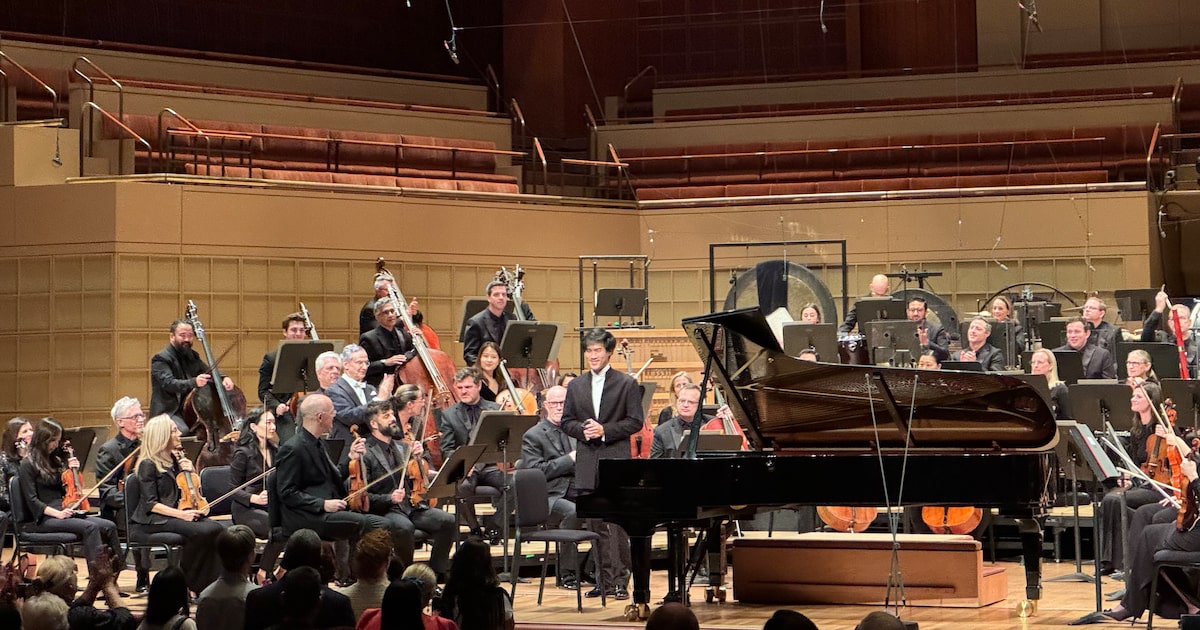Thursday night’s Dallas Symphony Orchestra concert was something of a travelogue — and a set of orchestral showpieces — except when it wasn’t. With music director Fabio Luisi conducting, the exception was What do flowers do at night? by DSO composer-in-residence Sophia Jani. But all four of the program’s pieces evoked visual experiences.
Ottorino Respighi’s Fountains of Rome portrays four fountains in music by turns gently rippling, spraying, splashing and surging, before sunset mutes all in darkness. Titles of the four-movement Church Windows were afterthoughts, applied to orchestrations of three previously composed piano pieces, plus a newly composed fourth movement.
The sobriquet Egyptian was also a subsequent attachment — not by the composer — to Saint-Saëns’ Piano Concerto No. 5. But it was composed on an Egyptian holiday, and the middle movement has some “exotic” colors and twists and turns of melody. Saint-Saëns even incorporated a song he heard from boatmen on the Nile.
Sophia Jani, born in 1989, educated in France and Germany, and at Yale University, composed her nine-minute tone poem in 2018. It’s said to evoke a cactus, called Queen of the Night, that blooms only overnight, only once a year.
News Roundups
One can imagine the sonic glowings and oozy slides as flowerings and witherings. A celebratory passage about three minutes in recedes into isolated surges of brass and drums. Tendrils of sound thread through complex harmonies, a great explosion of sound then fading away into nothing.
The piece seemed more effect than substance, leaving no lingering fragrance, but it was unlikely to disturb anyone’s digestion.
The Saint-Saëns essays no Austro-German or Russian grandeurs or profundities. It’s pure show, with plenty of glittery pianism in the outer movements. Bruce Liu, winner of the prestigious 2021 Chopin Competition in Warsaw, delivered the goods with élan, and with warm caresses of the first movement’s lyric second theme.
Luisi and the orchestra supplied able collaboration, although there was no gilding some uninspired orchestral motifs. The middle movement in particular outlasted one listener’s attention span, but at the end the audience rose in an eager ovation.
During the long stage resetting for the piano concerto, DSO organist Bradley Hunter Welch gave a helpful explanation of the organ’s varied uses in orchestral pieces.
It’s more substantial in Church Windows, the Meyerson’s mighty Fisk organ supplying great boomings beneath “St. Michael the Archangel” and emerging in a heroic solo in “St. Gregory the Great.” It’s more of a bass reinforcement at places in Fountains, but in both pieces some organ chords needed fuller registrations.
Plainsong (“Gregorian chant”) was a recent interest when Respighi composed Church Windows, but even the earlier Fountains often suggests chant contours. Both pieces are orchestral showpieces, of course, from pastel murmurs to enormous sonic explosions. Luisi and the orchestra made great shows of both, with notable solos from Alexander Kerr (violin), Gregory Raden (clarinet), Mark Debski (oboe), David Buck (flute), Stuart Stephenson (offstage trumpet) and Welch.
Details
Repeats at 7:30 p.m. Saturday and 2 p.m. Sunday (no Friday performance) at Meyerson Symphony Center, 2301 Flora St. $37 to $175. 214-849-4376, dallassymphony.org.
